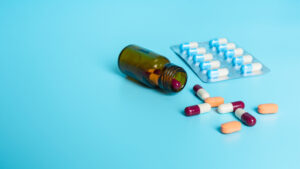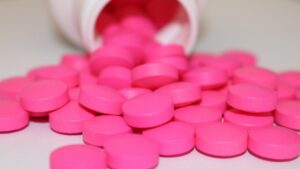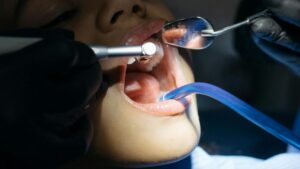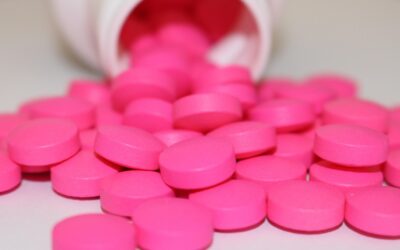Recovering from a dental procedure can be overwhelming, especially if you’re unsure what you can eat after tooth extraction. Your mouth is healing, and eating the wrong foods can lead to serious issues like dry socket or infection. That’s why following a proper post-op diet is essential for smooth recovery and pain-free healing.
Whether you’re asking what can I eat 24 hours after tooth extraction, curious about Day 3 or Day 7, or wondering when solid foods can return to your plate — this guide breaks it down by day-wise stages and includes expert-backed advice. Also, check out the comprehensive list of 50 soft foods to eat after tooth extraction.
✅ Quick Tip: Stick with soft, nutrient-rich foods and avoid anything crunchy, spicy, or hard during the healing process!
- Why Your Diet Matters After a Tooth Extraction
- What Can I Eat 24 Hours After Tooth Extraction?
- What Can I Eat 48 Hours After Tooth Extraction?
- What Can I Eat 3 Days After Tooth Extraction?
- What Can I Eat 5 Days After Tooth Extraction?
- What Can I Eat 7 Days After Tooth Extraction?
- Foods to Avoid for Up to Two Weeks After Tooth Extraction
- Bonus Tips for Faster Recovery
- Frequently Asked Questions
- Final Thoughts
Why Your Diet Matters After a Tooth Extraction

According to the American Dental Association (ADA), the blood clot that forms after an extraction is vital for proper healing. Eating the wrong foods — like chips or hot soup too soon — can dislodge the clot, delay healing, or lead to painful complications like dry socket.
Your diet should support:
- Clot formation and stability
- Reduced swelling and discomfort
- Tissue repair and hydration
What Can I Eat 24 Hours After Tooth Extraction?
The first 24 hours are the most sensitive. Your priority is preserving the blood clot and avoiding anything that involves chewing, sucking (even from a straw), or intense mouth movement.
Safe Foods to Eat:
- Cold smoothies (eat with a spoon, not a straw)
- Applesauce
- Plain yogurt or Greek yogurt
- Ice cream or sorbet (soft, no crunchy add-ins)
- Pudding or gelatin
- Cold or lukewarm broths
💡 Note: Cold foods can help reduce inflammation and provide comfort during the early healing stage.
Things to Avoid:
- Hot foods or drinks
- Acidic juices
- Crunchy or chewy textures
- Straws and smoking (both can cause dry socket)
As GoodRx Health explains, soft cold foods are ideal immediately after surgery, as they soothe the area without disturbing the extraction site.
Don’t forget to read Things to Avoid after Tooth Extraction
What Can I Eat 48 Hours After Tooth Extraction?
By the second day (48 hours post-extraction), your mouth is still healing, but swelling should begin to decrease. According to The Oral Surgery Group, you can begin introducing soft, lukewarm meals — just avoid chewing near the extraction site.
Introduce These Foods:
- Mashed potatoes (soft and smooth)
- Cream of wheat or oatmeal (cooled slightly)
- Scrambled eggs
- Blended soups (lukewarm)
- Mashed sweet potatoes
- Smoothies with protein (avoid seeds)
If you’re an addict then read this guide that why smoking after tooth extraction should be delayed.
⚠️ While you may feel better after two days, resist the urge to chew normally or try tough foods — the clot is still vulnerable!
What Can I Eat 3 Days After Tooth Extraction?
By Day 3, most patients report less swelling and discomfort. According to Colgate Oral Health, you can continue eating soft-chew foods, as long as you’re careful and still avoid anything hard or crunchy.
Recommended Options:
- Ripe avocados (mashed or sliced)
- Soft pasta or noodles
- Well-cooked, soft vegetables (like carrots or zucchini)
- Macaroni and cheese
- Cottage cheese
- Pancakes (soft, without nuts)
Chew on the opposite side of the extraction site, and rinse gently with warm saltwater (only if your dentist approves).
What Can I Eat 5 Days After Tooth Extraction?
On Day 5, your extraction site is likely healing well if there’s no swelling, bleeding, or pain. You can begin expanding your diet, but still with caution.
Add These to Your Diet:
- Shredded chicken or soft fish (tilapia, salmon)
- Rice or quinoa (well-cooked)
- Soft bread (no crusty rolls or toast)
- Cooked eggs in more solid forms (like an omelet)
- Soft muffins or banana bread
According to Shawnessy Dental, by the fifth day, most patients can tolerate semi-solid foods, but should still avoid foods that require heavy chewing or could get stuck in the healing area.
What Can I Eat 7 Days After Tooth Extraction?
A week after tooth extraction, most people are well on their way to recovery. If healing has gone smoothly, you can reintroduce more normal textures — still being mindful of tough or crunchy foods.
Safe to Eat at This Stage:
- Cooked meats (shredded chicken, meatloaf)
- Sandwiches with soft fillings
- Rice dishes with soft veggies
- Toasted bread (if not too crusty)
- Soups with soft meat and vegetables
✅ Note: Even if you feel fine, avoid things like popcorn, nuts, chips, and sticky candy for at least 10–14 days, or until your dentist clears you.
Foods to Avoid for Up to Two Weeks After Tooth Extraction
Even as your mouth begins to feel normal, there are still risky foods that can cause damage or infection:
- Crunchy snacks (chips, pretzels)
- Popcorn and nuts
- Hard bread crusts
- Carbonated drinks
- Alcohol (especially if you’re on antibiotics)
- Spicy sauces and acidic fruits (tomatoes, citrus)
Bonus Tips for Faster Recovery
Following dietary advice is only part of the healing process. Here are a few extra recovery tips, as recommended by experts from Colgate and the ADA:
- Hydrate frequently — sip water throughout the day.
- Elevate your head when resting to minimize swelling.
- Avoid intense physical activity for the first few days.
- Maintain oral hygiene — brush gently and avoid disturbing the clot.
💬 Helpful Reminder: If you notice signs like intense pain, foul smell, persistent bleeding, or a bad taste — these could indicate dry socket or infection. Call your dentist promptly.
Frequently Asked Questions
What can I eat 24 hours after tooth extraction?
In the first 24 hours after a tooth extraction, it’s best to stick to soft, cold, or room-temperature foods that require little to no chewing. Ideal options include:
- Applesauce
- Yogurt
- Smoothies (without a straw)
- Pudding
- Ice cream or sorbet
- Cold or lukewarm broths
Avoid hot, spicy, or crunchy foods, as well as anything that requires sucking — such as using a straw — to prevent dry socket.
What can I eat 3 days after tooth extraction?
By the third day, if you’re healing well, you can introduce soft-chew foods while still being cautious. Some good choices include:
- Scrambled eggs
- Oatmeal or cream of wheat
- Mashed potatoes
- Soft pasta or noodles
- Cottage cheese
- Ripe, mashed avocado
Continue to chew on the side opposite to the extraction site and avoid anything hard, sticky, or crunchy.
What can I eat 7 days after tooth extraction?
After 7 days, many people can resume a near-normal soft diet, depending on how well healing has progressed. At this stage, you can enjoy:
- Shredded chicken or fish
- Soft sandwiches
- Cooked rice or pasta
- Soft bread (no hard crusts)
- Cooked vegetables
However, still avoid hard snacks like chips, nuts, and popcorn until your dentist confirms full healing.
What can I eat after wisdom tooth extraction?
The diet after wisdom tooth extraction is similar to a regular extraction, but may require even more care, especially if multiple teeth were removed. Start with:
- Smoothies
- Applesauce
- Lukewarm soups
- Mashed potatoes
- Yogurt
In the following days, gradually introduce soft solids like scrambled eggs, pasta, and well-cooked veggies. Avoid using straws and don’t eat anything hot or spicy in the first 48–72 hours.
What soft foods can I eat after tooth extraction?
Soft foods help promote healing and reduce irritation. Some dentist-recommended soft foods after a tooth extraction include:
- Mashed bananas
- Blended soups
- Scrambled eggs
- Mac and cheese
- Mashed sweet potatoes
- Smoothies (spoon only)
- Rice pudding
- Soft pancakes
These foods are gentle on your gums and easy to swallow, making them ideal during recovery.
Final Thoughts
Healing from a tooth extraction doesn’t have to mean bland, boring meals — but it does require patience and caution. Following this day-by-day guide on what to eat after tooth extraction will help your mouth heal properly, minimize pain, and get you back to regular meals faster.
Whether you’re wondering what to eat 24 hours after extraction, curious about Day 3 or Day 7, or simply want to know when solid foods are safe again, this guide has you covered with expert-backed advice and practical meal ideas.
Disclaimer: The content provided in this article is for educational and informational purposes only. It does not substitute professional medical advice, diagnosis, or treatment. For guidance specific to your dental condition or recovery, please consult your dentist, oral surgeon, or licensed healthcare provider.










0 Comments